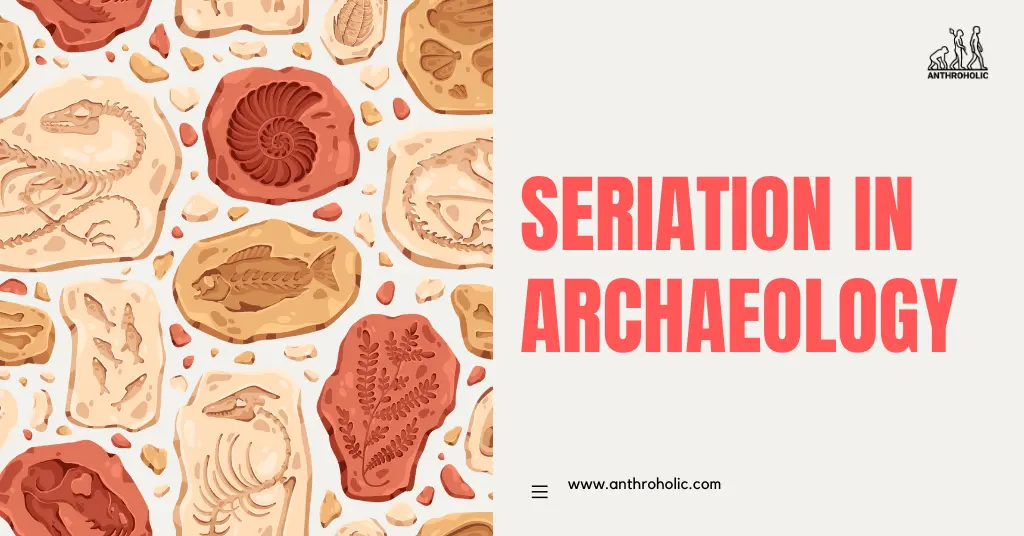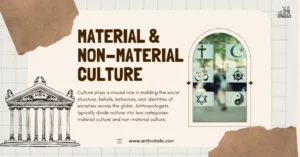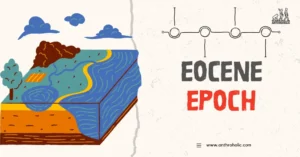AI Answer Evaluation Platform Live Now. Try Free Answer Evaluation Now
Seriation in Archaeology
Seriation is a relative dating technique used by archaeologists. The method relies on changes in the popularity of different styles or types of artifacts over time [1]. It allows archaeologists to sequence or arrange a collection of objects in the order they were made. This process is based on the principle that styles change and evolve over time, and these changes can be observed and plotted chronologically [2].

Types of Seriation
Archaeologists generally utilize three types of seriation:
- Frequency Seriation: This method plots the rise and fall in the popularity of a particular artifact style. It creates a “battleship curve,” named for its resemblance to the shape of a battleship.
- Occurrence Seriation: Also known as sequence dating, this approach arranges artifacts based on changes in form, style, or the presence of certain attributes [3].
- Contextual Seriation: This method uses the co-occurrence of specific artifact types within archaeological contexts to create a relative chronological sequence [4].
How Does Seriation Work?
The application of seriation involves a step-by-step process.
- Collection and Categorization: Artifacts are collected from different stratigraphic layers at an archaeological site. These are then categorized based on their attributes such as form, style, or material.
- Attribute Analysis: The relative frequency of each attribute is calculated and presented in a table, such as the one below:
| Stratigraphic Layer 1 | Stratigraphic Layer 2 | Stratigraphic Layer 3 | |
|---|---|---|---|
| Artifact Type A | 30% | 50% | 20% |
| Artifact Type B | 50% | 30% | 20% |
| Artifact Type C | 20% | 20% | 60% |
- Graphical Representation: The data is then graphically represented. This helps in understanding the changes in the popularity of an artifact type over time.
- Interpretation: The graph is interpreted to establish a relative chronological sequence.
Applications of Seriation
Seriation has been successfully applied in various archaeological investigations. One such notable application was at the site of Pompeii. Here, seriation helped establish a timeline for the distinct types of pottery and ceramic wares.
Archaeological Phases and Seriation
When investigating a site, archaeologists often divide the occupation history into ‘phases.’ Each phase is a specific period with unique artifact styles and types. The changes between phases can be minor, such as a slight shift in pottery decoration, or more significant, such as changes in architecture or land use.
By using seriation, archaeologists can recognize these shifts and build a timeline of these phases. This sequence helps understand the progression of cultures and the evolution of artifact styles.
Case Study: Pottery Seriation
Pottery is an excellent subject for seriation due to its abundance and variation in style and form. Archaeologists can use these variations to date different strata at archaeological sites.
Let’s consider a simplified example of pottery seriation:
| Stratum 1 | Stratum 2 | Stratum 3 | |
|---|---|---|---|
| Pottery Style A | 60% | 30% | 10% |
| Pottery Style B | 30% | 60% | 10% |
| Pottery Style C | 10% | 10% | 80% |
Table 2: An example of pottery style frequency
By ordering the strata based on the pottery style frequencies, archaeologists can identify the sequence of occupation for the site: Stratum 1 is the oldest, followed by Stratum 2, and then Stratum 3.
The Significance of Seriation
Seriation plays a crucial role in the world of archaeology. It helps archaeologists:
- Establish relative dating sequences: Seriation can help establish a chronological order of different sites, even when absolute dates are not available.
- Trace cultural changes: The changes in the style and popularity of artifacts can reveal information about cultural changes in society over time.
- Identify different archaeological phases: By identifying distinct types of artifacts, seriation helps in recognizing different archaeological phases.
Limitations of Seriation
Despite its benefits, seriation is not without its limitations. These include:
- It can only provide relative dates, not absolute dates.
- The assumption that styles change uniformly over time is not always accurate.
- Changes in artifact frequency may be influenced by factors other than time, such as changes in population size or resource availability.
Advancements in Seriation
With the advent of technology, seriation has evolved into a more data-driven technique. Computer algorithms are now capable of performing large-scale seriation, enabling archaeologists to handle larger and more complex datasets. Furthermore, the integration of seriation with other dating techniques, such as radiocarbon dating, has enhanced the accuracy and reliability of archaeological dating.
Conclusion
Seriation has proven to be an indispensable tool in archaeological research. While it may not offer absolute dates, it provides a way of understanding the sequence of events, cultural shifts, and evolution of styles. As technology advances, we can expect even more sophisticated and precise applications of seriation, further enlightening our understanding of the past.
References
[1] Shennan, S. (1997). “Quantifying Archaeology”. Edinburgh: Edinburgh University Press.
[2] O’Brien, M.J., Lyman, R.L. (1999). “Seriation, Stratigraphy, and Index Fossils: The Backbone of Archaeological Dating”. Kluwer Academic/Plenum Publishers.
[3] Kendall, D.G. (1971). “Seriation from Abundance Matrices”. In: Mathematics in the Archaeological and Historical Sciences. F.R. Hodson, D.G. Kendall, and P. Tăutu, eds. Edinburgh: Edinburgh University Press.
[4] Dunnell, R.C. (1970). “Seriation Method and Its Evaluation”. American Antiquity, 35(3):305-319.




